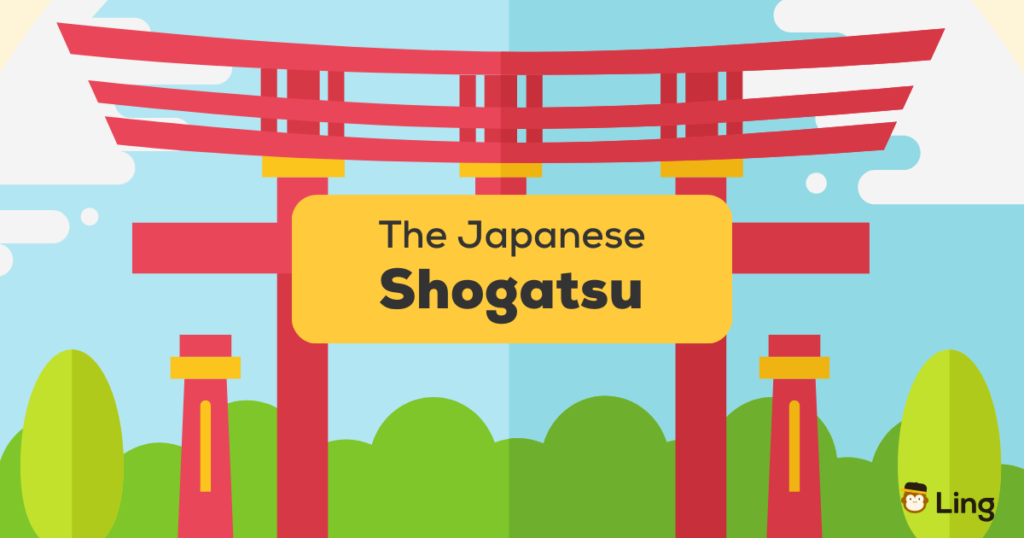Who’s ready to take their New Year’s festivities up a notch with some authentic Japanese flair? I’m talking about the Japanese Shogatsu (正月) mode from December 28th to January 3rd! In Japanese, the word Shogatsu translates to “New Year” and refers to their biggest and most cherished holiday celebration. You may also hear it called Oshogatsu (お正月). However you say it, this is a very big deal that’s been observed across Japan ever since the late 1800s Meiji period.
In this post, I can’t wait to dive into everything Shogatsu-related so you can soak up the symbolic foods, reflective rituals, hopeful traditions, and more that make the Japanese New Year so uplifting and auspicious! Whether you’ll be visiting friends in Tokyo for some NYE action or trying to recreate the magic at home this year, I’ll give you plenty of deets to immerse yourself fully in the Japanese New Year’s traditions. Let’s get right into it!
Table Of Contents
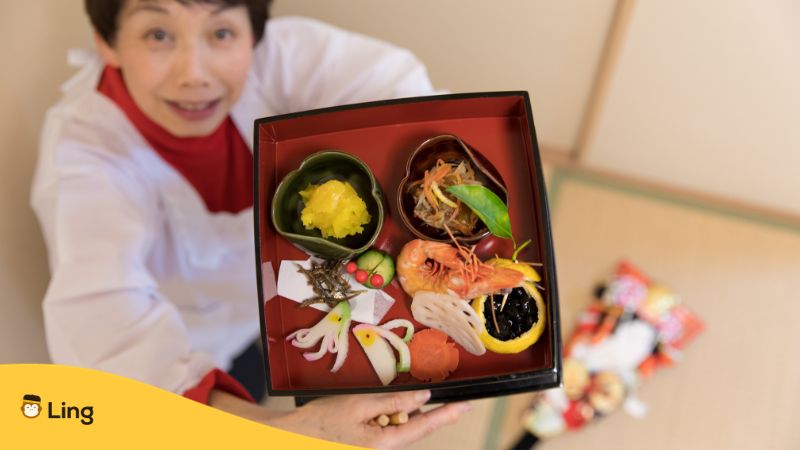
What Is Shogatsu?
At its core, Shogatsu marks the start of another cycle both in nature and society. It’s a collective clean slate providing renewed optimism and goal-setting for the year ahead. But just as importantly, this holiday emphasizes spending meaningful time with loved ones, both living and ancestral. Multiple generations reunite to cook elaborate meals, worship at temples and shrines, exchange gifts and wishes, and essentially reset mind, body, and spirit.
Traditions range from somber moments of reflection to joyous expressions of playfulness. For example, many families begin with solemn visits to pay respects to deceased relatives at gravesites or home altars. But then the mood lightens with sacred rope decorations or shimekazari (しめ飾り) meant to purify homes and kadomatsu (門松) bamboo displays symbolizing longevity placed at entrances.
The celebratory peak occurs right at midnight when monks ring the bonsho (梵鐘) or bells at Buddhist temples 108 times while people flock to shrines for their first prayers and often don colorful kimono. And as the sun rises on New Year’s Day or ganjitsu (元日) – the only Shogatsu date recognized as a national holiday – locals celebrate the dawn of the fresh start together at home with more rituals and meaningful meals.
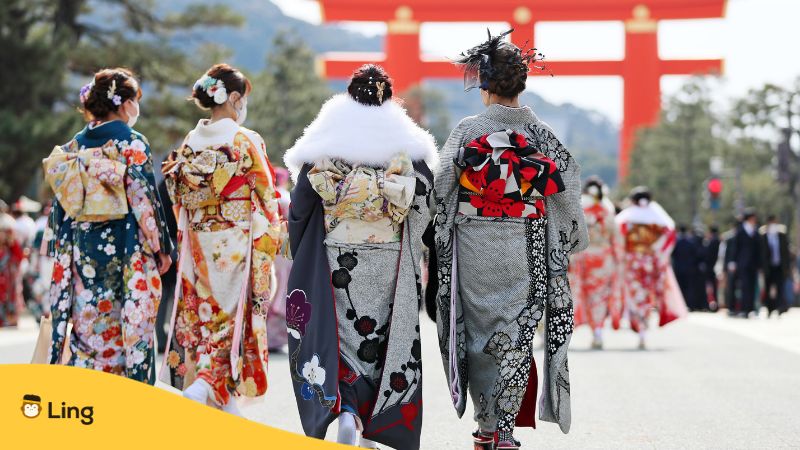
December Preparations For The Japanese Shogatsu
In Japanese, December is called Shiwasu (師走), written with characters that aptly translate to “masters run.” This nickname stems from December being an intensely busy period. If you’re celebrating in Japan, do expect this month to have a flurry of year-end activities, including expressing appreciation to colleagues, clients, supervisors, and teachers with oseibo (お歳暮) gifts, letting loose at bonenkai (忘年会) “forget-the-year” parties.
December 13th-28th: Scrubbing Down And Gearing Up
If you’re living with a Japanese host family over the holidays, get ready to roll up your sleeves! They’ll likely invite you to join their massive oosouji (大掃除) cleanse during Shiwasu. For the “big cleaning” tradition that resets homes spiritually, families may spend weeks tidying every nook and cranny.
The cleansing frenzy even extends to businesses preparing for the new year. Department stores and artisan shops clear out old inventory by selling fukubukuro (福袋) or “lucky bags” – mystery grab bags packed with random goods at steep discounts.
So, if you want some of the best shopping deals in Japan, hit the post-oosouji sales! Then, after the scrubbing winds down and before the number 29 date (which sounds similar to “agonize” in Japanese), New Year decor emerges to usher in fresh beginnings. Basically, three main decorative traditions emerge across Japan before the new year:
- Kadomatsu (門松) displays of pine and bamboo placed outside doorways
- Kagami-mochi (鏡餅)rice cakes arranged in lucky towers indoors
- Shime-kazari (しめ飾り)straw wreaths with citrus hung above entrances
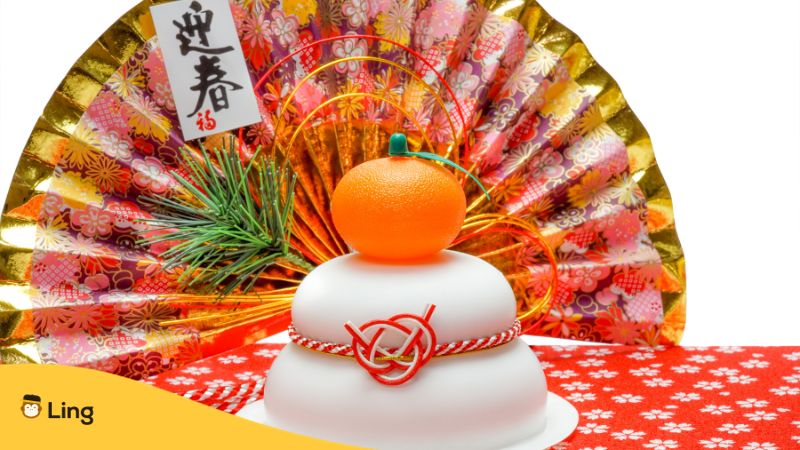
December 28th: Mochi Pounding And Lucky Display-Making
On the 28th day of December, cities across Japan come alive with mochi tsuki (餅つき) events – public ceremonies where crowds gather to make the ubiquitous New Year’s rice cake. Skilled participants take turns rhythmically pounding steaming sticky mochi grain inside a traditional usu mortar using large wooden kine mallets. The crowd cheers as the smooth, stretchy mochi blobs grow with each strike, eventually transforming into fresh mounds of soft rice cake.
Beyond spectacle, mochi symbolizes the harmony and endurance needed in the coming year. Its stretchiness represents flexibility to overcome hardship, while the communal activity focuses on togetherness. Newly pounded mochi features centrally in osechi ryori (おせち料理) feasts and kagami mochi decorations placed in homes once finished.
Speaking of which – kagami mochi (鏡餅) literally translates to “mirror rice cake.” These displays crafted on the 28th contain two round mochi cakes of graduating sizes, with a Japanese citrus perched on top. After a year of effort, families place kagami mochi prominently to make wishes for health and prosperity in harmonious succession.
December 29th-31st: The Women Take Over The Kitchen
For days leading up to New Year’s Eve or Omisoka, extended families gather in the kitchen to prepare osechi ryori (おせち料理)- a collection of traditional Japanese foods brimming with symbolic meaning for the holidays.
On December 31st specifically, anticipation builds for Kohaku Utagassen, a beloved NHK broadcast on TV. Usually, viewing parties enjoy Toshi Koshi soba noodle soup as they watch since the long buckwheat noodles represent aspirations for a long life.
Finally, as midnight nears, families pause to listen for joya no kane – the solemn sound of Buddhist temples tolling their bells many times to atone for the 108 worldly sins and impurities. The extended chiming marks the sensitive transition into the new year, setting minds, hearts, and spirits on fresh starts and good fortune to come.
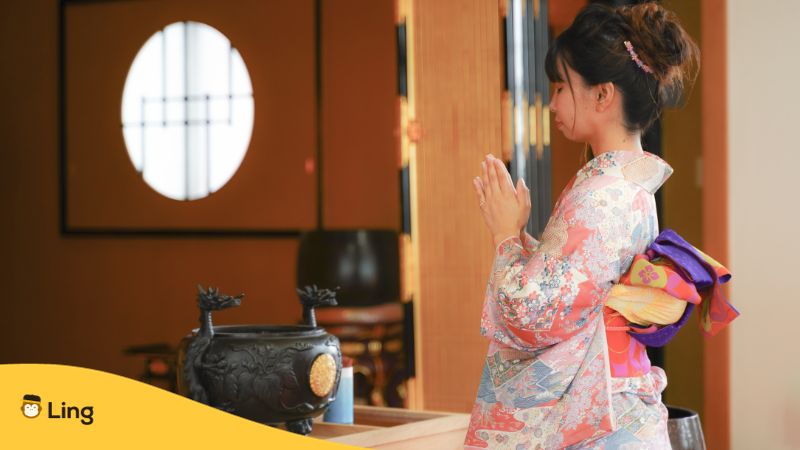
January 1-3rd: The Ganjitsu
On Ganjitsu or New Year’s Day specifically, many strive to glimpse the year’s first sunrise or hatsuhinode (初日の出), all while eating their prepared food inside the jubako boxes (お重箱). They believe that personally seeing the “first rising” sets a positive tone for months. During this time, the kids also receive nengajo (年賀状 or greeting cards) and otoshidama (お年玉 or money gift in a small envelope).
However, the celebration does not end there! During the first three days of the New Year, the Japanese also visit a shrine or temple to pray for happiness and good luck in the coming year, and this visit is called hatsumōde (初詣).
This hatsumōde tradition of first shrine visits has been deeply ingrained in Japanese culture for centuries and is observed by most places of worship nationwide. Famed sites like Meiji Shrine (明治神宮) and the Kawasaki Daishi (川崎大師) attract millions over just three days for this ritual renewal. And when visiting, both children and women often dress up colorfully in kimono (着物)to mark the occasion’s significance. During their time on the grounds, visitors try various luck-beckoning activities – from purchasing omamori (お守り) protective amulets and tossing coins into saisen bako (offertory boxes) to drawing omikuji paper fortunes to scribbling hopeful wishes upon ema wooden tablets.
On January 2nd specifically, many revelers flock to the Imperial Palace as it opens to the public, paying respects when Emperor Akihito emerges to address the crowd. Japanese calligraphy practitioners also observe kakizome on this day, ceremoniously writing the year’s first characters.

Happy New Year In Japanese
Japanese have many culturally significant phrases used to bid loved ones well at the start of a new year. Here are a few popular Shogatsu greetings to add auspiciousness to your celebrations:
- Akemashite omedetō gozaimasu (あけましておめでとうございます。)- This phrase translates to “Happy New Year” and can be used from January 1st through 3rd when greeting friends, colleagues, neighbors and acquaintances alike. The polite gozaimasu ending adds respect.
- Kotoshi mo douzo yoroshiku onegaishimasu (今年もどうぞよろしくお願いいたします。)- Say this phrase, meaning “Please take care of me this year again”, when bowing to supervisors, teachers, respected elders and established business partners as you continue professional relationships into another year. The humble verbs give deference.
- Yoi otoshi wo (よいお年を。)- For casual well-wishing, this cheerful phrase works well. It directly translates to “Have a good year!” and can be exchanged more broadly when celebrating New Year’s joyfully with all who cross your path during the festive days.
Sprinkle these symbolic phrases into your Japanese New Year chats or seasonal greeting cards to add cultural resonance. Their layered meaning carries a beautiful connection – embracing fresh starts yet honoring enduring bonds with humility, respect, and ultimate optimism.
Learn Japanese With Ling
As you can see, the Japanese New Year, known as Shogatsu, overflows with profoundly meaningful rituals, foods, and phrases that offer more than surface-level celebration. I hope this glimpse into the essence behind the exciting facade of Japanese New Year traditions has left you curious to unwrap more. After all, there is always a layered history or heartfelt symbolism hidden within this culture if we explore it mindfully!
If you felt inspired to dive deeper into the language or customs, I wholeheartedly recommend continuing your discovery on the Ling app. Ling offers bite-sized Japanese lessons that suit learners of all levels. Its straightforward lessons distill need-to-know travel phrases, witty idioms, polite manners, and rich cultural context into accessible 5-minute lessons. Give it a try now!
